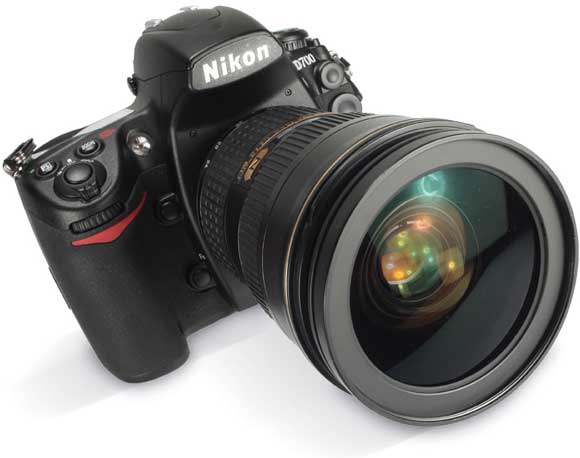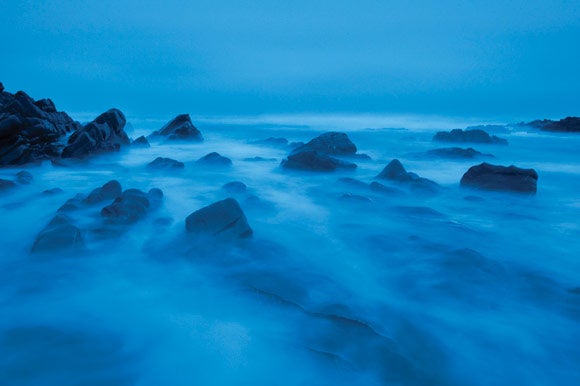Subjects in Motion – Essential Gear
Everything you need to capture creative blurred images
Camera
 Ideally a DSLR with low noise and high-ISO capability for after-dark shots, and low ISO settings for long exposures on brighter days. If it has a live view histogram, you can speed up exposure assessment with the camera’s long exposure noise reduction turned on (as it should be), for every second the shutter is open, the camera will take an equivalent amount of time to process the image. This is a nuisance at very long exposures but the live view histogram saves you having to wait to see if the exposure is right.
Ideally a DSLR with low noise and high-ISO capability for after-dark shots, and low ISO settings for long exposures on brighter days. If it has a live view histogram, you can speed up exposure assessment with the camera’s long exposure noise reduction turned on (as it should be), for every second the shutter is open, the camera will take an equivalent amount of time to process the image. This is a nuisance at very long exposures but the live view histogram saves you having to wait to see if the exposure is right.
Flash
 Popping a flash off at the end of a long exposure introduces an element of sharpness in an otherwise blurry image and adds extra dynamism to moving subjects. A TTL flash allows you to follow the action more easily, but a strobe with manual control works well too, once you’ve determined a good balance between daylight and flash.
Popping a flash off at the end of a long exposure introduces an element of sharpness in an otherwise blurry image and adds extra dynamism to moving subjects. A TTL flash allows you to follow the action more easily, but a strobe with manual control works well too, once you’ve determined a good balance between daylight and flash.
Niall uses: Nikon Speedlite SB800.
Alternative: See pages 38-41 for our Guide to Flash and page 118 of our Buyer’s Guide.
ND Filter
 This reduces the amount of light reaching the sensor and allows you to make long exposures, even in very bright conditions.
This reduces the amount of light reaching the sensor and allows you to make long exposures, even in very bright conditions.
Niall uses: A 0.9 (3 stop) Lee ND filter. alternatives: Choose round screw-in ND filters by Hoya, B+W, Tiffin or Kood (above), or square slot-in types for filter holders by brands like Lee and Cokin.
Remote release with timer function
 This is very useful when you want to make exposures that are longer than the camera’s timed speeds.
This is very useful when you want to make exposures that are longer than the camera’s timed speeds.
Tripod
 You thought you’d get away without one? Well you can for a lot of this work, especially if it involves introducing a deliberate shake to the picture. But for others that contrast still and moving objects, you’ll need a tripod to keep things sharp during long exposures. Don’t extend the central column if your tripod has one – you’ll greatly compromise stability, and extend the legs only as high as absolutely necessary. The fewer sections they comprise, the better. You can add to the stability of a tripod by hanging your camera bag from it with a bungee cord.
You thought you’d get away without one? Well you can for a lot of this work, especially if it involves introducing a deliberate shake to the picture. But for others that contrast still and moving objects, you’ll need a tripod to keep things sharp during long exposures. Don’t extend the central column if your tripod has one – you’ll greatly compromise stability, and extend the legs only as high as absolutely necessary. The fewer sections they comprise, the better. You can add to the stability of a tripod by hanging your camera bag from it with a bungee cord.
Niall uses: Gitzo 1340 alloy tripod with a Really Right Stuff ball head.
Alternative: For panning, a three-way head is best.
Lenses
 I use my 80-200mm a good deal for this sort of work, but try to avoid zooming the lens during a long exposure as the result looks very mechanical.
I use my 80-200mm a good deal for this sort of work, but try to avoid zooming the lens during a long exposure as the result looks very mechanical.
Niall uses: Nikon 80-200mm f/2.8 D ED.
Alternatives: Every manufacturer has its own equivalent fast telephoto, or you could look at one of these independent alternatives:
Sigma 70-200mm f/2.8 EX DG MACRO HSM II,
Tamron 70-200mm f/2.8 Di LD IF Macro.





